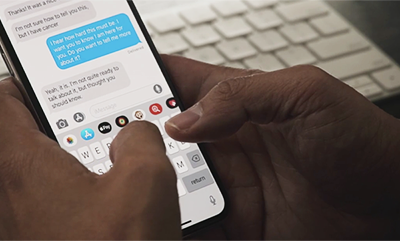“Alexa,你会对被诊断患有癌症的朋友说什么?”’.

Hearing that a loved one has cancer can be traumatic, emotional, and overwhelming. Finding the right words to comfort that person can also be challenging.
Andrea DeMarsh, a Master of Science student studying epidemiology at the School of Public Health, recently completed a video project that offers guidance on how people can respond in a helpful manner when someone they care about shares this news.
DeMarsh received an Activist Bucks grant from SPH’s Activist Lab to fund the production of a short video for the Young Adult Program (YAP) at Dana-Farber Cancer Institute, where she works full-time as a senior clinical research coordinator in the institute’s Pediatric Stem Cell Transplant Program. Last semester, DeMarsh helped the YAP leadership team brainstorm content and messaging for the video, which was produced by JV Films. She sought first-hand input from YAP’s patient community (ages 18-39) to understand what they considered to be the most valuable types of support after they were diagnosed with cancer.
“The young adult population is so integrated online these days, so the idea of a video made sense,” says DeMarsh. “The project aimed to empower cancer patients and survivors with a platform to communicate their experiences and share the video via social media to provide a voice to their peers and to the public.”
Titled “What to Say (and Not to Say) to a Friend with Cancer,” the video takes a modern approach to educate the public on how to show honest empathy and support to a person who has cancer, without dismissing the reality of a grim and unexpected situation. It centers around a young male who receives a text message from a female friend sharing the news of her recent cancer diagnosis. After typing and deleting several responses, the male friend anxiously turns to a trusted source of information—Alexa.

“Alexa, what do you say to a friend who was just diagnosed with cancer?” he asks.
On cue, the all-knowing virtual assistant offers a range of responses that would be appreciated by people dealing with their diagnosis—as well as examples of comments that, while well-intentioned, might not be as supportive, especially to a person who is struggling to comprehend and accept their diagnosis. A helpful response: acknowledging their feelings. An unhelpful response: trying to find a silver lining to their health situation.
The video, which is available on Dana-Farber’s website and social media pages, has been viewed hundreds of times on YouTube, and DeMarsh says that it has received a lot of positive feedback.
“One of the most useful things I learned is that just saying that you don’t know what to say is sometimes enough,” says DeMarsh, adding that the message can be applied to other distressing situations and difficult conversations that people need to have. “Many people in the Young Adult community said they wished sometimes that people would just say, ‘I can’t imagine what you’re going through, so I don’t know what to say,’ and just leave it at that.”
In these situations, says DeMarsh, “nothing you say is going to make it better—you can’t fix it with your words, so just acknowledging that, and showing your support is enough, and that’s the message that we are trying to send.”